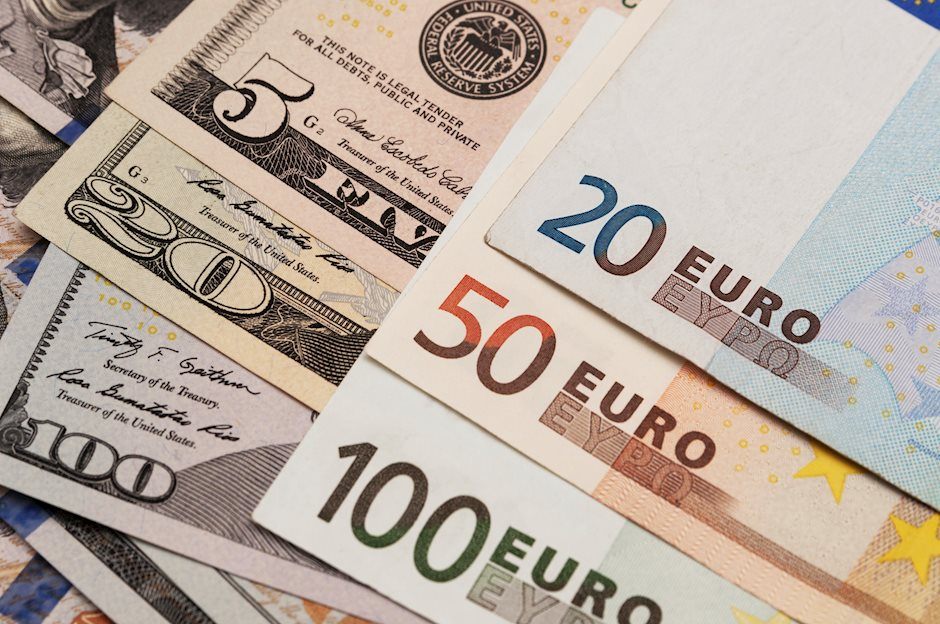EUR/USD rises to 1.0830 as Eurozone Inflation accelerates, Fed policy eyed
- EUR/USD jumps to near 1.0830 as Eurozone inflation grew more than expected in July and the US Dollar slumps.
- Eurozone annual headline HICP surprisingly accelerated while the core figure grew steadily.
- The US Dollar weakens on expectations that the Fed will deliver a dovish guidance on interest rates.

The EUR/USD pair moves higher to near 1.0830 in Wednesday’s European session. The major currency pair rises as price pressures in Eurozone grew at a faster-than-expected pace in July. This has raised doubts about whether the European Central Bank (ECB) will resume its policy easing cycle in the September meeting.
Preliminary Eurozone Harmonized Index of Consumer Prices (HICP) report for July showed that annual headline and core inflation, which strips off volatile items such as: food, energy, alcohol, and tobacco, surprisingly accelerated. The headline HICP unexpectedly rose to 2.6%, while economists expected the inflation figure to decelerate to 2.4% from June’s reading of 2.5%. The core HICP grew steadily 2.9% against expectations of 2.8%.
Investors were expecting the ECB to cut interest rates two more times this year. However, stubborn inflation data suggests that price pressures will face several bumps in their sustainable return towards 2%, which is expected in 2025.
Meanwhile, a sharp decline in the US Dollar (USD) ahead of the Federal Reserve (Fed) policy announcement at 18:00 GMT has also strengthened the shared currency pair. The US Dollar Index (DXY), which tracks the Greenback’s value against six major currencies, slumps to near 104.00.
The US Dollar is under pressure on expectations that the Fed will deliver dovish guidance on interest rates after leaving them unchanged for the eighth time in the range of 5.25%-5.50%.
Before that, investors will focus on the ADP Employment Change data, which will be published at 12:15 GMT. According to estimates, the United States (US) private sector hired 150K new employees in July, which was similar to June’s reading.
Euro FAQs
The Euro is the currency for the 20 European Union countries that belong to the Eurozone. It is the second most heavily traded currency in the world behind the US Dollar. In 2022, it accounted for 31% of all foreign exchange transactions, with an average daily turnover of over $2.2 trillion a day. EUR/USD is the most heavily traded currency pair in the world, accounting for an estimated 30% off all transactions, followed by EUR/JPY (4%), EUR/GBP (3%) and EUR/AUD (2%).
The European Central Bank (ECB) in Frankfurt, Germany, is the reserve bank for the Eurozone. The ECB sets interest rates and manages monetary policy. The ECB’s primary mandate is to maintain price stability, which means either controlling inflation or stimulating growth. Its primary tool is the raising or lowering of interest rates. Relatively high interest rates – or the expectation of higher rates – will usually benefit the Euro and vice versa. The ECB Governing Council makes monetary policy decisions at meetings held eight times a year. Decisions are made by heads of the Eurozone national banks and six permanent members, including the President of the ECB, Christine Lagarde.
Eurozone inflation data, measured by the Harmonized Index of Consumer Prices (HICP), is an important econometric for the Euro. If inflation rises more than expected, especially if above the ECB’s 2% target, it obliges the ECB to raise interest rates to bring it back under control. Relatively high interest rates compared to its counterparts will usually benefit the Euro, as it makes the region more attractive as a place for global investors to park their money.
Data releases gauge the health of the economy and can impact on the Euro. Indicators such as GDP, Manufacturing and Services PMIs, employment, and consumer sentiment surveys can all influence the direction of the single currency. A strong economy is good for the Euro. Not only does it attract more foreign investment but it may encourage the ECB to put up interest rates, which will directly strengthen the Euro. Otherwise, if economic data is weak, the Euro is likely to fall. Economic data for the four largest economies in the euro area (Germany, France, Italy and Spain) are especially significant, as they account for 75% of the Eurozone’s economy.
Another significant data release for the Euro is the Trade Balance. This indicator measures the difference between what a country earns from its exports and what it spends on imports over a given period. If a country produces highly sought after exports then its currency will gain in value purely from the extra demand created from foreign buyers seeking to purchase these goods. Therefore, a positive net Trade Balance strengthens a currency and vice versa for a negative balance.
Author

Sagar Dua
FXStreet
Sagar Dua is associated with the financial markets from his college days. Along with pursuing post-graduation in Commerce in 2014, he started his markets training with chart analysis.

















